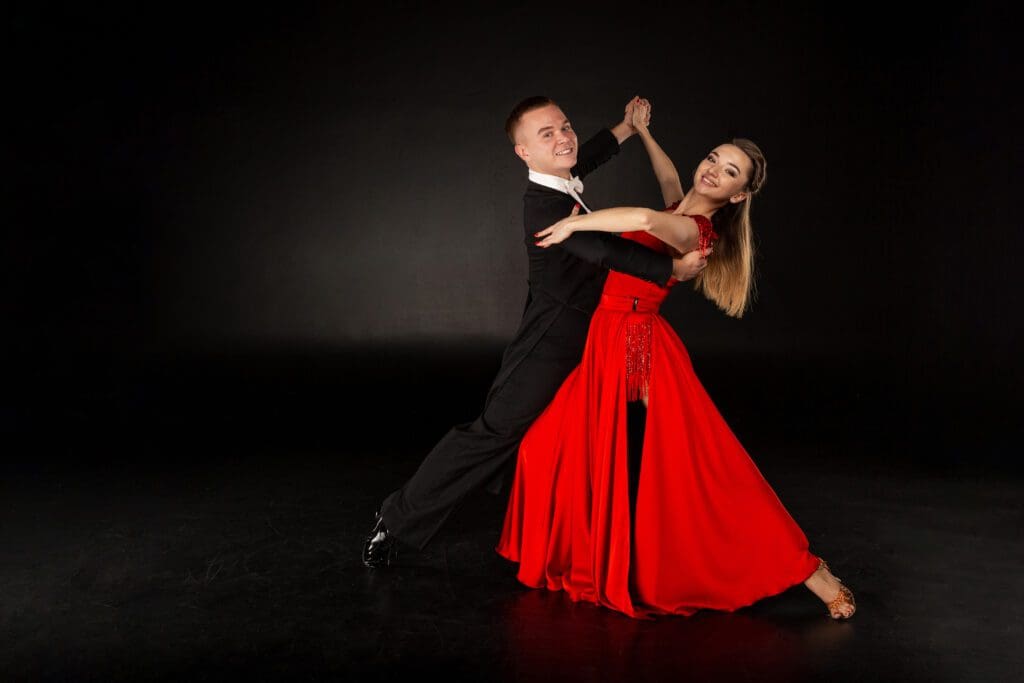Quick Step
Quick Step History
Quickstep, a lively and energetic ballroom dance, has a history that evolved through a fusion of various dance styles:
Origins in the 1920s:
- Quickstep originated in the 1920s in England. It evolved from a combination of the Foxtrot, Charleston, Peabody, and One-Step.
- The dance was developed during the jazz era, where fast and energetic dancing became popular.
Evolution and Popularity:
- The Quickstep distinguished itself from the slower Foxtrot with its brisk pace and lively steps.
- It gained popularity as a faster version of the Foxtrot, suited to the upbeat jazz music of the time.
Characteristics:
- The Quickstep is characterized by its fast-moving, light, and fluid steps. It includes complex figures like hops, runs, quick steps, and rotation.
- The dance emphasizes energy, smoothness, and elegance, often incorporating syncopated rhythms and a dynamic interplay between partners.
Modern Ballroom Dancing:
- Today, Quickstep is one of the standard dances in International Style ballroom competitions.
- It continues to evolve but retains its signature style of quick movements and playful nature.
In summary, the Quickstep, born out of the dynamic dance culture of the 1920s, has become a staple of modern ballroom dancing, known for its speed, elegance, and spirited character.
Quick Step Characteristics
The Quickstep is a fast-paced, lively ballroom dance known for its light, quick footwork and smooth flowing movements. It combines elements of the Foxtrot and Charleston, featuring a mix of hops, skips, and kicks. Dancers exhibit a joyful, energetic demeanor, often with a bouncing rhythm that matches the upbeat music, making it a dynamic and exhilarating dance to both watch and perform.
Quick Step Music Information
Quickstep music, known for its lively and upbeat nature, has several defining characteristics:
Tempo: The music is fast-paced, typically ranging between 200 to 208 beats per minute (bpm), creating a lively and energetic rhythm.
Time Signature: Quickstep music usually has a 4/4 time signature, providing a steady and predictable rhythm for dancers.
Rhythmic Pattern: The music often features a regular, quick rhythm that supports the light and brisk movements of the dance.
Musical Style: Quickstep music is characterized by its cheerful and bright sound, often including jazz, swing, and big-band elements.
Mood: The overall mood of Quickstep music is upbeat and joyful, reflecting the dance’s playful and energetic nature.
These musical elements combine to create the perfect backdrop for Quickstep dancing, encouraging quick footwork, smooth flows, and an overall sense of fun and excitement.
